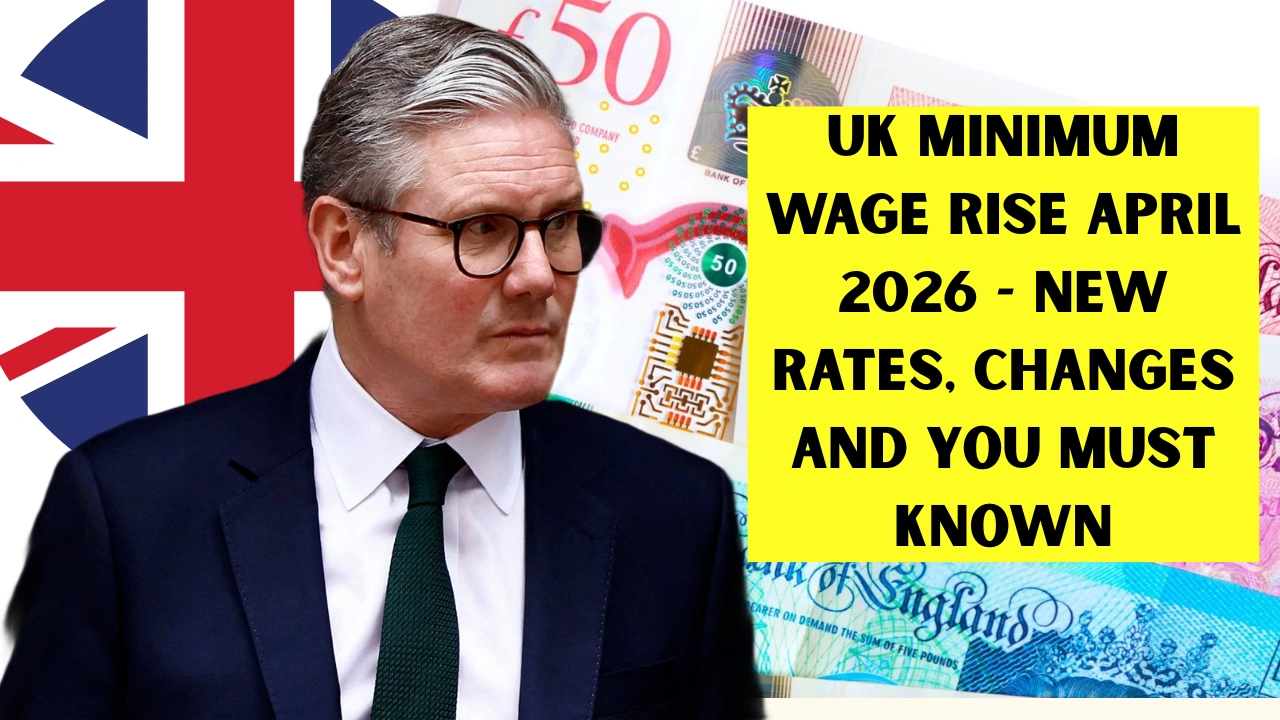The UK Minimum Wage rise in April 2026 is one of the most significant economic updates of the year, offering both relief and new challenges.
The UK minimum wage is set for another significant rise in April 2026, with the National Living Wage (NLW) projected to climb to £12.71 per hour, according to the Low Pay Commission’s latest estimates released in August 2025. This rise, which could fall within a range of £12.55 to £12.86, will affect millions of workers across the country and bring fresh challenges and opportunities for businesses already adjusting to higher labour costs.
What Is Changing in April 2026?
From April 2026, the National Living Wage (NLW) – currently £12.21 for workers aged 21 and over — is expected to increase by around 4.1% to £12.71.
Other wage bands for younger workers and apprentices are also under review, with strong signals that the government may phase out age-based pay discrimination, potentially aligning 18–20-year-old rates with the NLW. This would mark a historic step towards pay equality for younger workers.
The government confirmed on 5 August 2025 that the Low Pay Commission (LPC) has been tasked with ensuring the NLW keeps pace with two-thirds of median earnings, while also considering inflation forecasts, cost of living pressures, and the impact on businesses.
Why Is the Minimum Wage Going Up?
The increase is part of the government’s long-term strategy to make work pay fairly and sustainably. The goal is to ensure wages grow in line with wider economic trends while protecting workers from the cost of living crisis.
Over the past year, inflation has remained high, especially in essentials such as food, rent, and energy, leaving many households struggling despite the April 2025 increase to £12.21. The projected 50p/hour rise in April 2026 could mean an extra £975 per year for full-time workers.
However, critics warn that persistent inflation may quickly erode these gains, leaving households still under pressure.
Impact on Workers
For workers, the April 2026 wage rise means:
-
A boost in take-home pay, particularly for those in retail, hospitality, and care sectors.
-
Greater financial security for young workers if age-based pay bands are scrapped.
-
A chance for low-income households to better manage rising living costs.
But there are also concerns. The cost-of-living crisis remains acute, and even with the pay rise, many workers could find that higher wages are offset by inflation and rising bills.
Impact on Businesses
For employers, particularly in hospitality, retail, and small businesses, the wage increase poses challenges:
-
Higher labour costs will affect profit margins.
-
Businesses may be forced to raise prices, cut bonuses, or reduce staff hours.
-
Increased pay could improve staff retention and morale, reducing recruitment costs in the long run.
Companies are already being urged to review payroll budgets, adjust pricing strategies, and plan ahead for April 2026.
From April 2026, the UK’s National Living Wage (NLW) is expected to rise from £12.21 to £12.71 per hour, marking a 4.1% increase. The Low Pay Commission projects that the new rate will fall within a range of £12.55 to £12.86, depending on economic conditions. This rise, announced in August 2025, is part of the government’s commitment to keep the NLW at least two-thirds of median earnings. The update will affect millions of workers, with full-time employees set to earn almost £975 more annually. Younger workers may also benefit if age-based wage bands are scrapped, creating a fairer pay structure. While the rise offers much-needed relief amid high living costs, many households will still struggle as inflation in essentials like food, rent, and energy continues. For businesses, especially in hospitality and retail, the rise brings higher staffing costs but could improve worker retention. Final wage rates will be confirmed after the Low Pay Commission’s October 2025 recommendations.
Government Guidance and Timeline
-
August 2025 – Government issued remit to LPC.
-
October 2025 – LPC will submit its final recommendations.
-
April 2026 – New minimum wage rates take effect.
The remit directs the LPC to consider not only fairness for workers but also business competitiveness and the wider economy.
Comparison: Minimum Wage 2025 vs. 2026 (Projected)
| Category | April 2025 Rate | April 2026 Estimate | Change |
|---|---|---|---|
| National Living Wage (21+) | £12.21/hour | £12.71/hour (range £12.55–£12.86) | +4.1% |
| 18–20 Year-Old Rate | £10.00/hour | Under review, may align with NLW | Potentially +27% |
| 16–17 Year-Old Rate | £7.55/hour | TBC | Likely increase |
| Apprentice Rate | £7.55/hour | TBC | Likely increase |
What This Means for the UK Economy
The rise is expected to:
-
Boost consumer spending, as low-paid workers tend to spend most of their earnings locally.
-
Increase business costs, particularly in labour-intensive industries.
-
Encourage greater automation in some sectors as employers seek cost efficiencies.
What’s Next?
The final figures will be confirmed following the LPC’s October 2025 report. Until then, both workers and employers should prepare for a National Living Wage of around £12.71/hour in April 2026.
For households, the rise promises a welcome but limited relief against the cost of living crisis. For businesses, it marks another step in a challenging balancing act between fair pay and financial sustainability.
Conclusion
The UK Minimum Wage rise in April 2026 is one of the most significant economic updates of the year, offering both relief and new challenges. Workers stand to benefit from higher pay, while businesses must adapt to manage costs. With inflation still biting, the wage increase is timely, but whether it truly eases financial strain will depend on broader economic conditions in the year ahead.
✅ Stay Updated:
Final wage rates for April 2026 will be announced after the Low Pay Commission’s October 2025 review.
